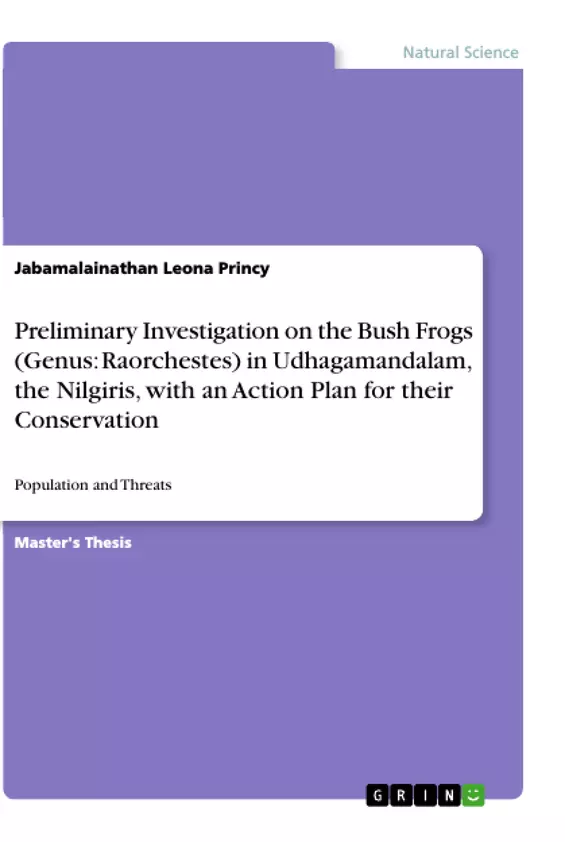The Nilgiri Biosphere Reserve (NBR) is the home for many endemic species of Western Ghats. Amphibians within Western Ghats and Nilgiri Biosphere Reserve shows very high level of endemism especially in the genera Raorchestes. The genus Raorchestes are shrub frogs in the family Rhacophoridae under the class Amphibia. Published information on the Herpetofauna particularly about amphibians of NBR is scanty. There is no detailed study on the ecology of the bush frogs. Hence it is decided to study the ecology, current taxonomic positions their habit and habitat and distribution pattern of bush frogs. Four different localities have been selected for this study in and around Udhagamandalam. In each locality visual encounter survey method was used to collect data on bush frogs. During the study period, three species of Raorchestes were recorded such as Raorchestes tinniens, Raorchestes signatus and Raorchestes thodai. Raorchestes mostly recorded during the rainy season under bushes and other vegetation.
Inhaltsverzeichnis (Table of Contents)
- INTRODUCTION
- OBJECTIVES
- STUDY AREA
- MATERIALS AND METHODS
- RESULT
- DISCUSSION
- SUMMARY
- ACTION PLAN AND MANAGEMENT
- RECOMMENDATIONS
- REFERENCES
Zielsetzung und Themenschwerpunkte (Objectives and Key Themes)
This study aims to conduct a preliminary investigation of bush frogs (genus: Raorchestes) in the Udhagamandalam region of the Nilgiris and develop a conservation action plan. The study focuses on understanding the distribution, ecology, and threats faced by these amphibians in the region.
- Amphibian diversity and endemism in the Western Ghats
- The ecological role of bush frogs in the ecosystem
- Threats to bush frog populations, including habitat loss and climate change
- Conservation strategies for protecting bush frog populations
- The importance of amphibians as indicators of environmental health
Zusammenfassung der Kapitel (Chapter Summaries)
- Introduction: Provides background information on amphibians, highlighting their importance in healthy environments and their role as indicators of environmental health. Introduces the Western Ghats as a biodiversity hotspot with a high diversity and endemism of amphibian species, particularly bush frogs.
- Objectives: Outlines the specific objectives of the study, focusing on investigating the distribution, ecology, and threats to bush frogs in the Udhagamandalam region.
- Study Area: Describes the geographical location and ecological characteristics of the Udhagamandalam region, emphasizing its importance as a habitat for bush frogs.
- Materials and Methods: Details the methodologies used for data collection, including field surveys, habitat assessments, and species identification techniques.
- Result: Presents the findings of the study, including data on the distribution and abundance of bush frogs, as well as information on their habitat preferences and threats.
Schlüsselwörter (Keywords)
This study focuses on the conservation of bush frogs (genus: Raorchestes) in the Western Ghats, specifically in the Udhagamandalam region of the Nilgiris. Key topics include amphibian diversity, endemism, habitat loss, climate change, conservation strategies, and ecological role of amphibians as indicators of environmental health.
- Citar trabajo
- Jabamalainathan Leona Princy (Autor), 2013, Preliminary Investigation on the Bush Frogs (Genus: Raorchestes) in Udhagamandalam, the Nilgiris, with an Action Plan for their Conservation, Múnich, GRIN Verlag, https://www.grin.com/document/517850



